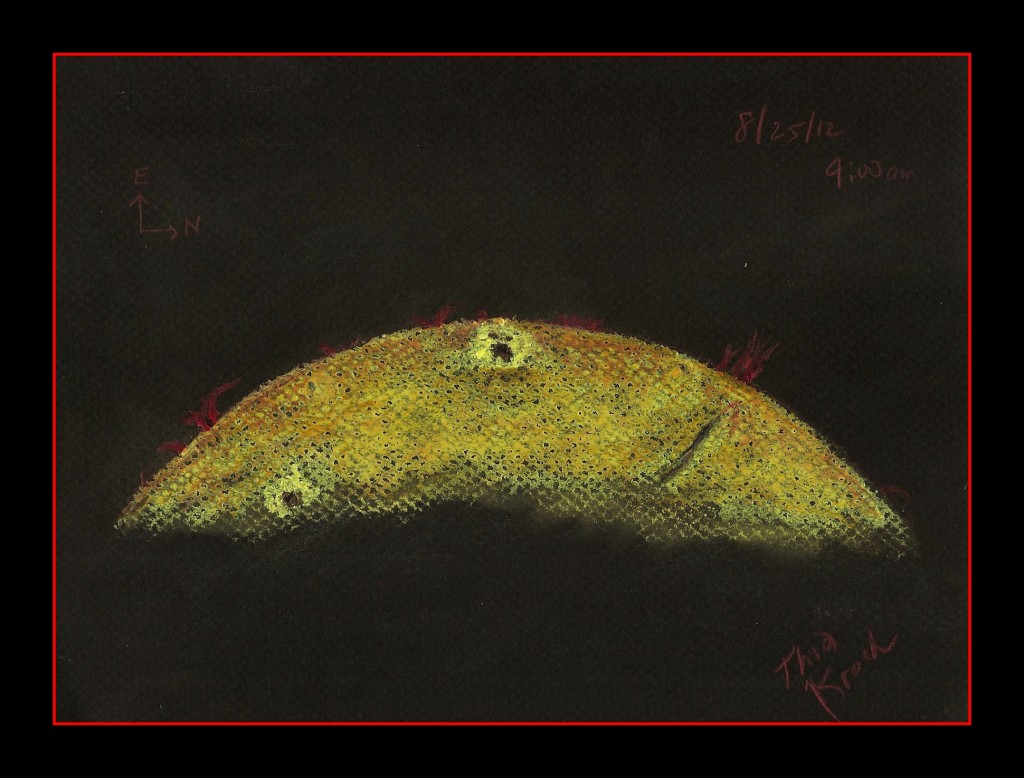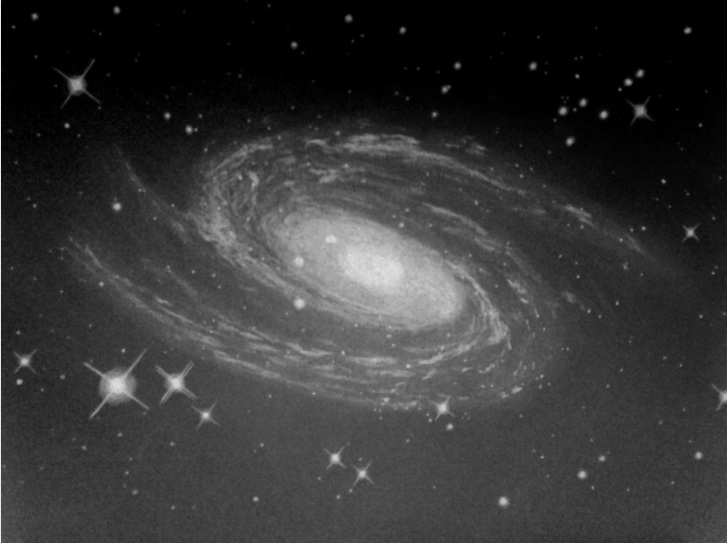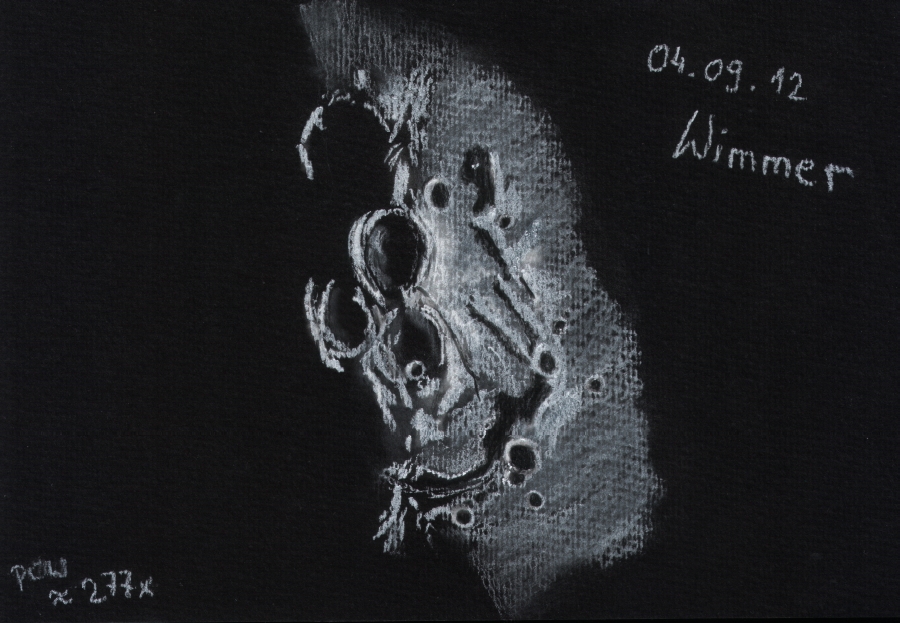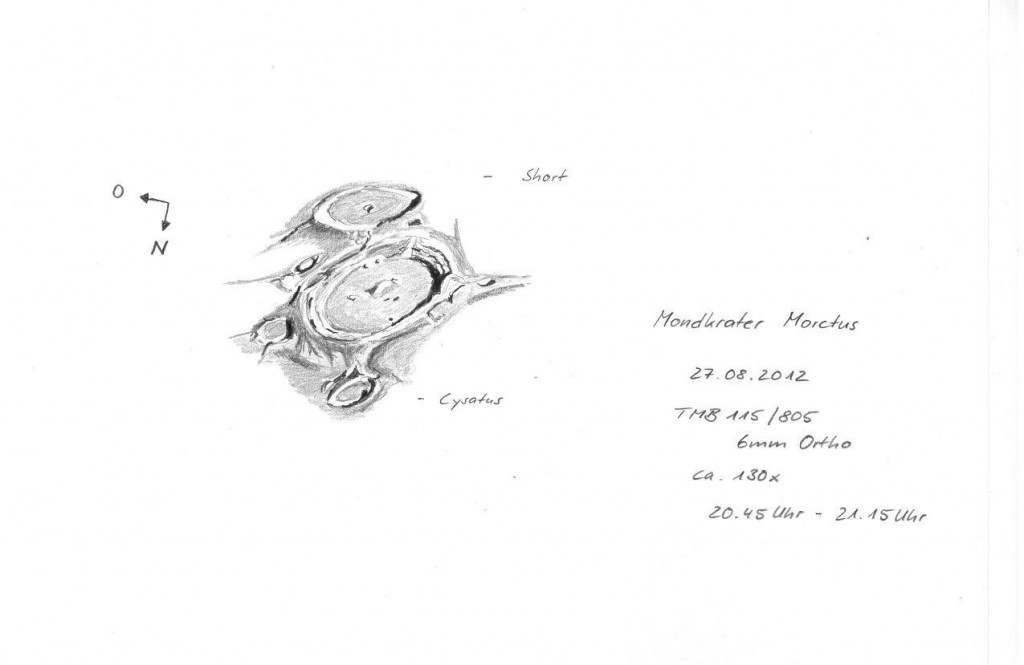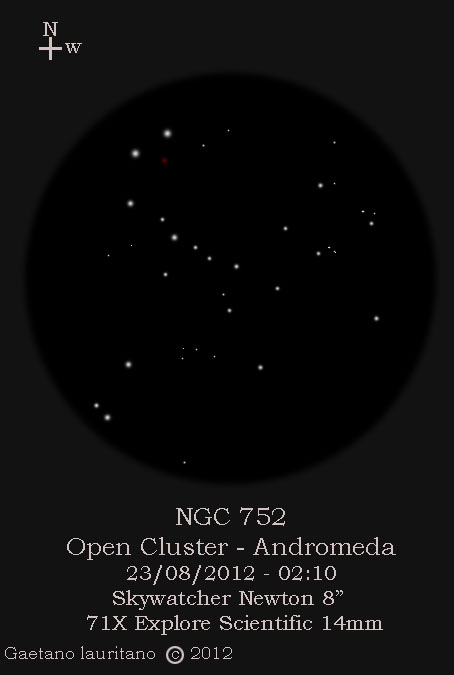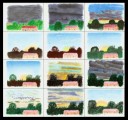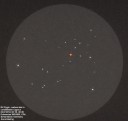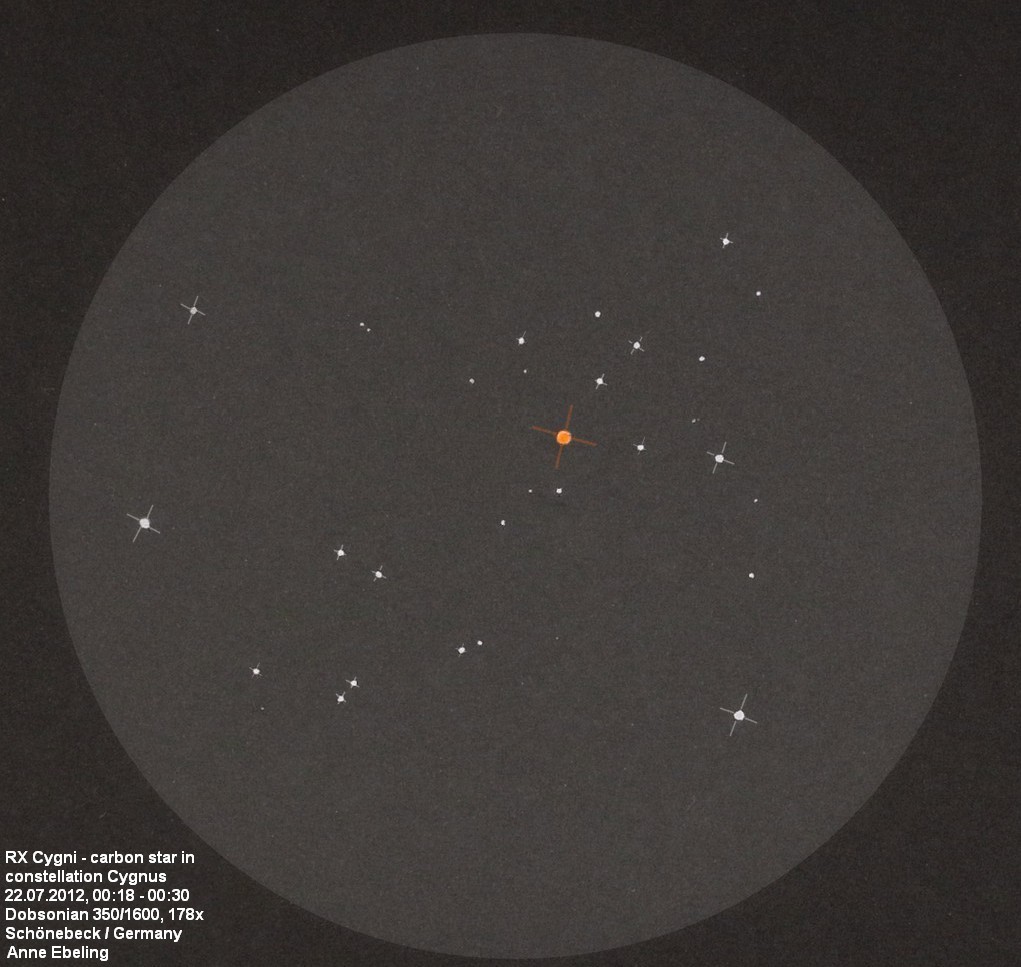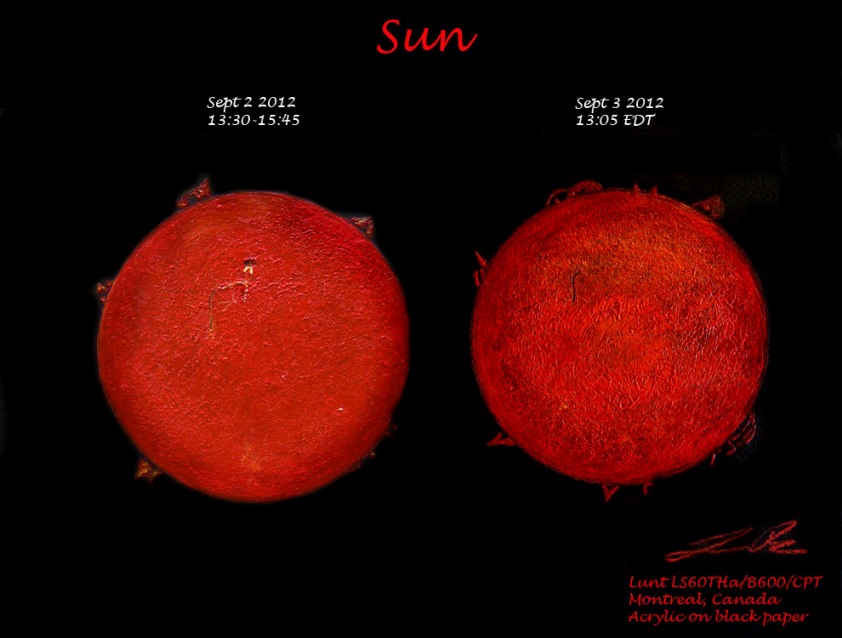
Object Name : Sun
Object Type : H alpha observation
Location : Montreal, Canada
Date : September 2 and 3
Media : Acrylic on black paper
Scope: Lunt LS60THa/B600|CPT on motorized EQ3 mount.
Our star put up a great show during 2 days. I was able to observe the «good hair day» of the sun for a total of nearly 5 hours. Many proeminences, which remained relatively stable throughout 48 hours, could be seen. The observation of September 2nd was interesting. I started the observation around 13:00 EDT keeping the magnification low (25-50X) to sketch the whole disk and the distribution of the proeminences. I kept an eye on AR 1560, which was facing earth. Around 14:00 EDT this region began to light up. Two bright flares (showed at the upper center lane of the first disk) were clearly visible and increased in brightness for the next 30 minutes. Then they faded away and by 15:00 EDT the phenomenon ended. I was glad to be able to capture this activity on my sketch.
The sketches were done on black Pastel Paper with HB pencil to record details of the proeminences. The disk was traced with a compass. Acrylic paint (red and yellow) was then used to reproduce the color seen in H alpha. The paint was layered with large and small brushes directly on the lines of the HB pencil. The two separate sketches were photographed and then assembled with Photoshop CS3. No color or contrast adjustment were done except for the background.
Jean Barbeau


